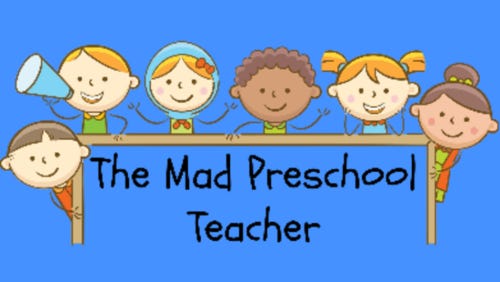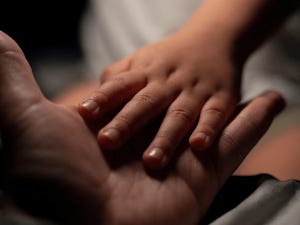Today in the playground a child made a mistake during a heated exchange with a friend and acted out physically. Out of the ordinary for this child. Their mom was gone on a trip to care for an elderly parent, a major factor within this moment. There was only one thing to do—I scooped the child up, quickly reminding them they are not in trouble and had every right to be angry. This information creates an immediate sense of safety. We’ll revisit other strategies to work with those big feelings and check in with their friend later. Overwhelmed with emotions they fell into my arms with nothing to do on my part but hold. One of those typical preschool moments that always feels so sacred, so important to get it right.
As I held them, their body trembling and sobbing against mine, I felt something unexpected arise. A flicker of another child—my own inner one—pressing up from deep within. Not in memory exactly, but in presence. I was holding one child, but feeling two as we seemingly fell into each other's arms.
The crying child in my lap needed exactly what I needed when I was young: to be seen, soothed, and held without shame for needing comfort. But back then, there was no teacher on the playground for me like the one I’ve become. No one attuned to the cry beneath the behavior. No one to say, “You’re not too much.”
In that moment, I felt like a bridge across time between a child in my care and a child I used to be. And for a second, my chest caught with that familiar ache. The ache of being present to what I needed at times and didn't get. And the miracle of being able to give it now.
I think many of us in caregiving roles carry our wounded parts into the work, and if we’re honest, that’s often where our gifts live. Our sensitivity is not just a trait—it’s the echo of a need unmet, now transformed into empathy and attunement.
This is the real curriculum in my school: not just play and literacy and social skills, but healing. For the kids, yes. But also for me. The more I am tuned into my care the better I am at showing up for the children in my life. Here lies the symbiotic relationship as the personal benefits of being a caregiver allow me to stay close to my wounded parts which in turn creates more sensitivity to my work.
My experience in this work has shown me that rather than questioning whether people with similar lived experiences to mine belong in caregiving roles, we should be actively inviting them in. The healing and transformation that can happen for both caregiver and client is profound. When someone who was once labeled as “sick” is instead seen as gifted, that shift alone can be healing. It reframes the narrative from one of pathology to one of purpose. This is not the story many of us heard early on, especially within the biomedical model. But it’s a radical and necessary rewrite—one that can potentially bring untold value to our communities.
The most meaningful experience I’ve had with a therapist was one who proudly identified with similar experiences to mine. Within one session I realized I had been needing this all along. Someone who’s been there and done that with an intimate understanding of my experiences based within their own. We were two wounded healers creating something sacred well beyond symptoms and pathology. It was revelatory to me! Unfortunately, this isn’t encouraged and practiced within the systems we usually go to for help. My insurance did not cover this care as those who want to practice from this model must step outside the system to offer this kind of support.
I’ve come to trust over the years that my unique sensitivities don't disqualify me from being a caregiver. They make me a better one! I’m not just caring for the kids; I’m also caring for the hurt little boy in me. Both entwined in a daily dance of care and holding. It is essentially this alchemy that makes my school so popular and why I am so respected in my community. My little secret for now.
So today, we both cried. One out loud. One quietly, inside. And both of us were held.
That’s the sacred reciprocity of this work: I care for the children in front of me, while also tending to the child I once was. What once felt like a liability—my sensitivity, my wounds—have become my greatest asset.
This is the quiet magic of caregiving when it’s rooted in empathy and lived experience. It doesn’t just change others. It changes us.
We become the grown-ups we once needed.
We rewrite the story.
And in doing so, we heal together.
Much Love,
The Mad Preschool Teacher
He/Him




This reminds me of a scene I encountered recently at a wildlife sanctuary as a wild goose and her family made a close approach. I wondered if I had a toddler with me, should I scoop them up to safety beforehand, or should I wait and respond to the child vs goose energy before lifting the child up out of the way of any hostile behaviour from that territorial bird? What’s your take ?